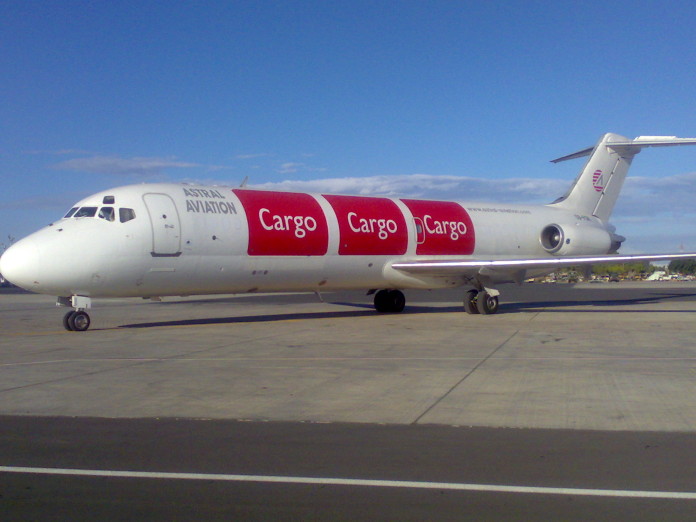

Africa is the last frontier of opportunity for aviation and the air cargo market, relatively untapped and waiting to develop into the powerhouse region many think it can become.
However, it continues to be held back by political instability, despite this improving, a lack of infrastructure and co-operation between all 54 countries on the continent, although it is most definitely on the way up.
The International Air Transport Association estimates Africa will be the second fastest air cargo market over the next five years with a projected growth rate of five per cent per annum.
One optimist for the region is Astral Aviation chief executive officer and founder, Sanjeev Gadhia and he explains: “While there is not enough data on the growth of the intra-African air cargo market. Astral Aviation estimates the intra-African market presents the best growth rates in the world estimated at 10 per cent growth per annum.
“There are a number of positive steps that are taking place in the area of liberalisation with the ratification of the Single African Air Transport market in 2017, which has already been embraced by 22 out of 54 countries in Africa.”
Intra-African trade needs to grow in the view of many and Gahdia says it is as more African countries are trading with each other due to the presence of free trade agreements (FTA) or free trade areas such as COMESA, SADC, ECOWAS and EAC.
He also notes the Tripartite Free Trade Area which comprises of 26 countries with a combined population of 632 million people which is 57 per cent of Africa’s population and with a total Gross Domestic Product (GDP) of $1.3 trillion – contributing 58 per cent of Africa’s GDP.
Gadhia feels Africa has countries that have good potential across the four sub-regions of North Africa, East Africa, Southern Africa and West Africa.
He believes these include Libya and Tunisia (North Africa), South Sudan, Tanzania and Rwanda (East Africa), Angola, Mozambique and Madagascar (Southern Africa) and Cameroon, Ghana and Ivory Coast (West Africa). He adds: “The real opportunities are in the intra-African sector with Nairobi, Addis Ababa, Johannesburg and Lagos being the primary hubs and the gateway for cargo to and from the continent.”
Political instability at least improving and Africa is more stable in Gadhia’s view, but there are countries still seeing problems such as South Sudan and the Central African Republic.
There is also a strong international presence in the air cargo market and foreign carriers uplift in excess of 85 per cent of volumes to and from Africa, and approximately 40 per cent on the intra-African sector.
Gadhia feels African airlines need more assistance: “African carriers have a limited share of the market and are disadvantaged due to the regulatory authorities who grant unrestricted market access and fifth freedom rights to foreign carriers. In addition there are limited joint ventures (JV) between foreign carriers and African airlines.”
But how can they gain more of a market share?
Gadhia believes African airlines need to take a realistic view and realise they don’t have the resources to compete with the foreign carriers and they have to “find innovative ways in co-operating with them” in areas such as codeshares, SPA’s and JV’s.
Astral has interline agreements with over 20 airlines and a few codeshares in addition to a JV with its UK partner, ANA Aviation.
He adds: “In addition, African airlines need to co-operate amongst themselves as there are various initiatives by AFRAA (African Airlines Association) which remain unexploited due to a general lack of interest.”
Infrastructure needs investing in and despite this growing through private sector investment in airports and air cargo facilities, there are positive signs in key markets such as Kenya, Tanzania, Ghana, Nigeria, but Gadhia says there is “sufficient facilities in many countries which hampers growth”.
He notes high costs and taxes are an impediment to growth of airfreight infrastructure in addition to state monopolies in certain regions.
As for drones, Africa is set to see them – to meet humanitarian needs, medical supplies and get cargo to locations off the radar.
Astral is at the forefront and Gadhia says it will diversify into commercial drones once the regulations have been ratified in Kenya, as currently only South Africa and Rwanda have them in place and cover consumer goods, medical, emergency relief, oil-gas-mining-projects, utilities and infrastructure sector, agriculture, and other sectors.
He explains: “Astral has big plans for this sector and aims to operate a combination of drones for urban deliveries of small parcels and medicines in addition to remote deliveries for the oil, gas, mining and projects sector. In addition, it will provide surveillance services for infrastructure projects.”
Gadhia says Astral will invest considerable resources to acquire commercial drones and invest in drone ports and training pilots.
Despite positive signs in the African market, more commitment and investment is needed across the continent.
Gadhia concludes: “Africa is often regarded as the last frontier of opportunity, however, there is still a hesitation by the rest of the world to invest in Africa, as the approach is that of an arms-length.
“The outlook for growth in intra-Africa is immense and more attention and investment is required especially in the air cargo sector.”













